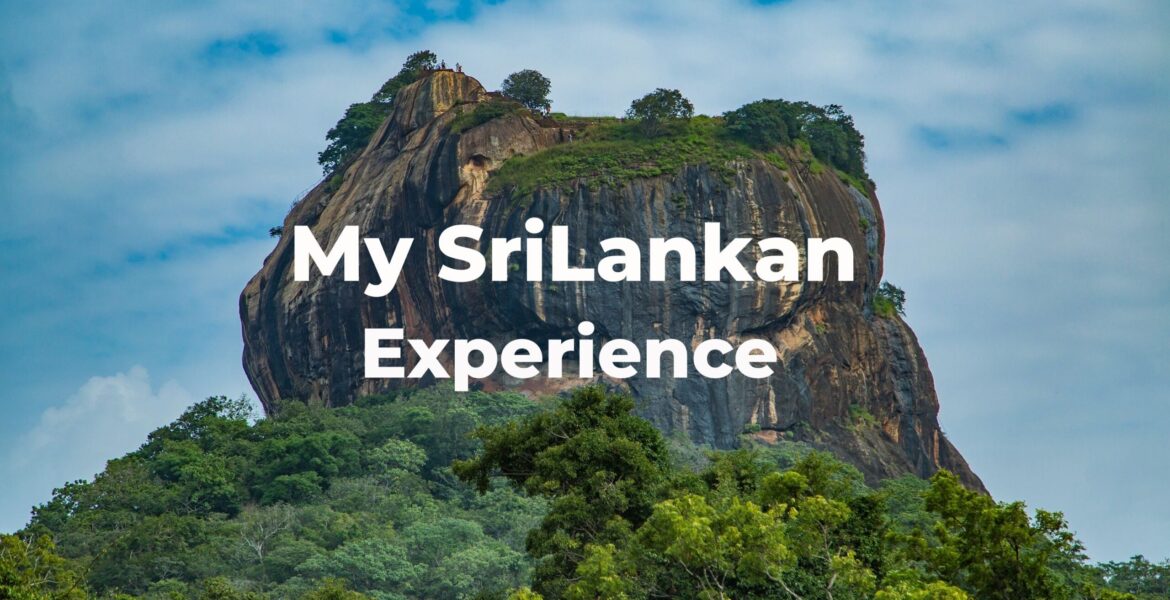My SriLankan Experience
2024-07-23 9:28My SriLankan Experience
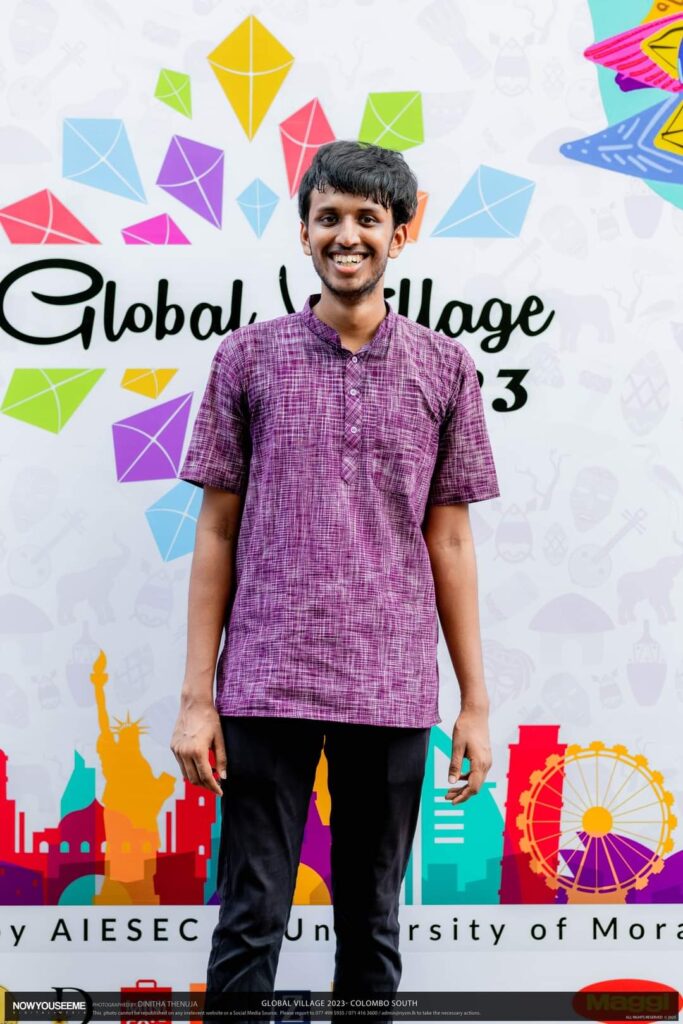
Hi, I am Aswini Patro and here’s my experience in Srilanka.
Sri Lanka, often referred to as the “Pearl of the Indian Ocean,” had long been a destination I yearned to explore. As I embarked on my six-week journey, I couldn’t help but anticipate that my experiences here would mirror some aspects of my native India, given their geographical proximity and shared cultural ties. However, what unfolded during my journey through this teardrop-shaped paradise was a revelation of unique charm, culture, and natural beauty that left an indelible mark on my heart. Upon setting foot in Sri Lanka, it became immediately apparent that this was a land distinct from its neighboring giant, India. The country’s unique touch permeated every aspect of my journey, from its tantalizing cuisine to the captivating architecture of its houses. One of the most intriguing aspects of Sri Lanka’s architecture is its preservation of British, Dutch, and Portuguese influences. This preservation is evident in the charming town of Nuwara Eliya, often fondly referred to as “Little England.” As I wandered its streets, I felt transported back in time, surrounded by picturesque cottages and gardens that bore a striking resemblance to an English countryside.
Galle Fort, on the other hand, was a living testament to Dutch architecture, with its cobblestone streets, historic buildings, and a palpable sense of history. The Port City, a modern marvel, displayed contemporary Chinese architectural influences, providing a stark contrast to the colonial remnants I had explored earlier
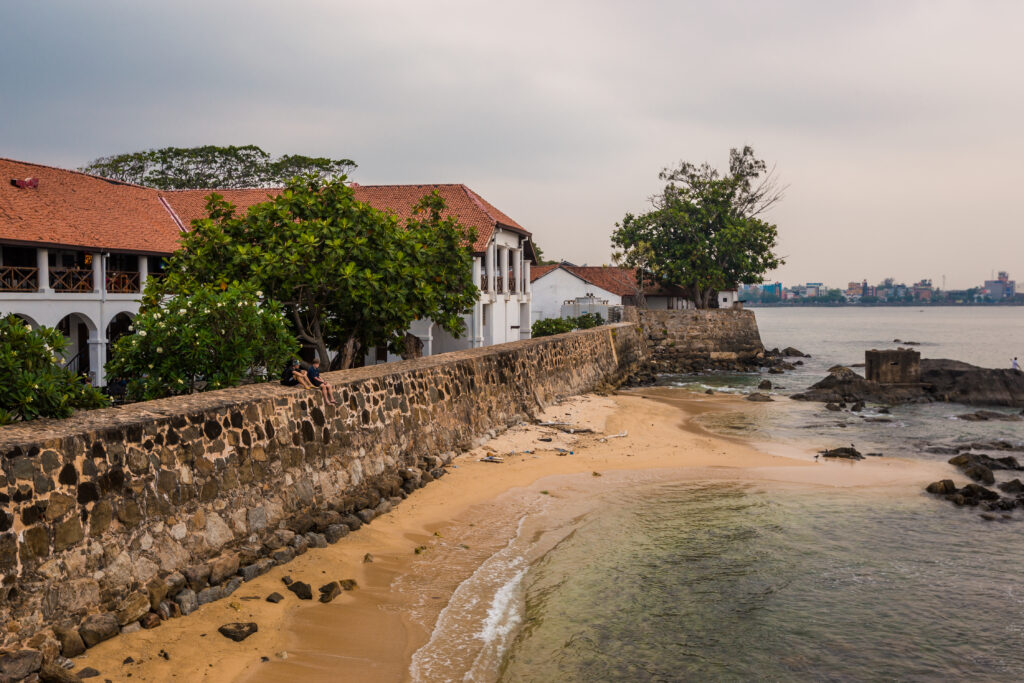
Sri Lanka’s economy thrives on tea and rubber plantations, and tourism plays an integral role in supporting these industries. Throughout my journey, I encountered a warm and welcoming atmosphere, with a plethora of accommodation options catering to every traveler’s needs. From luxurious resorts to cozy homestays, budget-friendly hostels to charming restaurants, Sri Lanka was prepared to host visitors from around the world. My exploration led me to the coastal regions of southern and western Sri Lanka, where the country’s vibrant beaches awaited. Trincomalee, Koggala, Weligama, Mirissa, and more beckoned with their azure waters and pristine sands. These coastal havens were not just idyllic for relaxation but also hotspots for water sports enthusiasts. From the exhilaration of surfing to the wonders of scuba diving and snorkeling, from deep-sea fishing to the thrill of windsurfing and the majesty of whale watching, Sri Lanka’s coasts offered an array of aquatic adventures. To make the most of these water activities, I learned that the ideal time to visit was between November and April when the weather was at its finest. It was during these months that the ocean came alive with opportunities to explore its depths and encounter its diverse marine life.
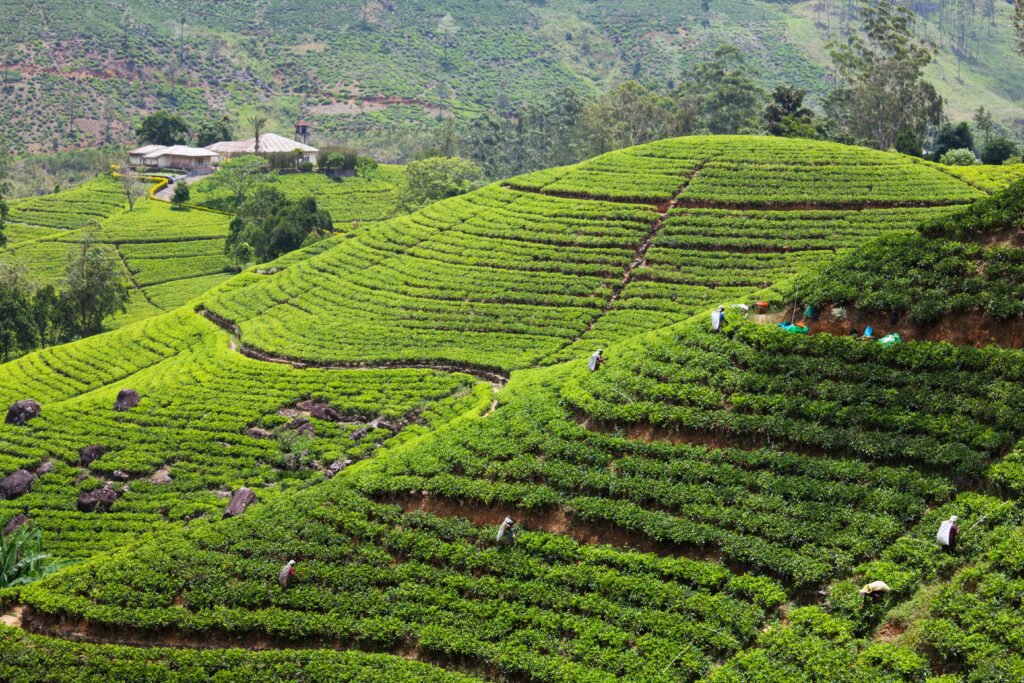
In Sri Lanka’s central region, places like Kithulgala provided a different kind of thrill. Here, I immersed myself in white-water rafting, kayaking, canoeing, and river expeditions. The surrounding landscapes offered breathtaking waterfalls and river streams, making it an ideal destination for canyoning. Additionally, I explored the area on a mountain bike, winding my way through lush tea estates and eventually ascending to the Bellilena Caves. For these adventurous water activities, I was fortunate to find Borderlands Adventure, which ensured not only my safety but also a memorable and exhilarating experience. Their expert guides and commitment to fun made it an unforgettable part of my Sri Lankan journey. One of the most captivating experiences during my stay in Sri Lanka was witnessing the Kandy Esala Perehera, an annual cultural procession with a rich history. This procession was unlike anything I had ever seen, with over 160 cultural groups, more than 100 elephants, and hundreds of drummers, dancers, singers, monks, swordsmen, musicians, and acrobats all coming together to create a spectacle of epic proportions. It was, in fact, the largest ritual procession in the world. The roots of the Esala Perehera can be traced back to the 16th century when the Sacred Tooth Relic found its way to Kandy, under the guardianship of Dewanagala Rathnalankara Thero. The relic was initially housed in the Gedige Viharaya in Asgiriya before a magnificent temple was constructed within the royal palace premises to enshrine it. This marked the establishment of the iconic Temple of the Tooth Relic.The Sri Dalada Perahera, also known as the Eshala Perehera, is an annual procession dedicated to honoring the Sacred Tooth Relic and four guardian deities: Natha, Vishnu, Kataragama, and Goddess Pattini. Beyond its grandeur, the procession serves a noble purpose – to seek blessings for rain to nourish the kingdom’s crops and lands. My exploration of Sri Lanka’s diverse culture and unique adventures continued to unveil hidden gems. In Matara, I had the opportunity to witness the mesmerizing Devil Dance, a traditional form of dance that holds immense cultural significance. This captivating performance showcased the intricate and symbolic movements of dancers adorned in vibrant costumes. It was a fascinating glimpse into Sri Lanka’s rich artistic traditions.
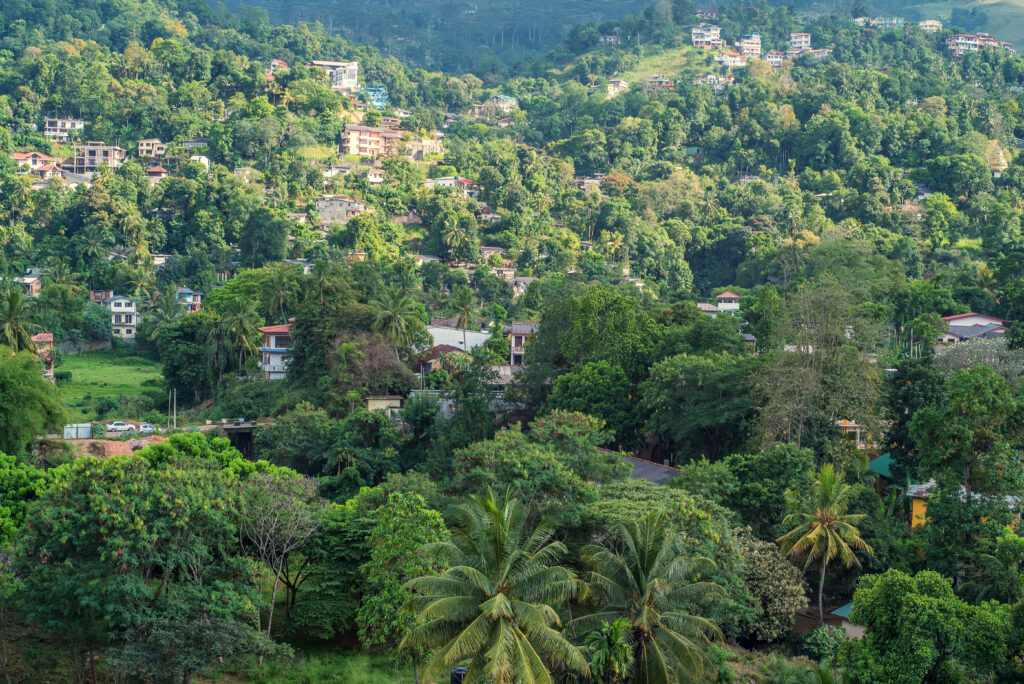
In Kandy, I visited the Buddhist History Museum, a place that provided valuable insights into the history and evolution of Buddhism not only in Sri Lanka but also in various countries such as India, Nepal, Japan, China, Vietnam, and many more. The museum highlighted the different traditions and sects of Buddhism practiced around the world. Sri Lanka’s Theravada Buddhism, which follows unique rituals and beliefs, stood in contrast to the Mahayana sect practiced in India and Nepal. Notably, Theravada followers do not have a spiritual leader akin to the Dalai Lama; instead, their devotion is solely to Gautam Buddha. My journey in Kandy also led me to the Sri Maha Bodhi Viharaya in Bahirawakanda. This sacred site featured a towering statue of Gautam Buddha, offering breathtaking panoramic views of the city from its elevated location. It was a serene spot that provided a peaceful retreat and a glimpse of the cityscape below. The Udawatta Kele Sanctuary in Kandy was another hidden gem. This lush sanctuary offered an ideal setting for capturing breathtaking photographs amidst dense woods, serene ponds, and unique spots for relaxation. It was a tranquil escape within the city, providing a serene contrast to the bustling urban life. Prior to immersing myself in the vibrant cultural experiences, I had the opportunity to explore the Colombo National Museum, where a rich collection of artifacts, coins, swords, flags, and indigenous clothing brought the history of Sri Lanka to life.

My fascination with the epic tales of the Ramayana led me to explore significant sites associated with this ancient narrative. Close to Nuwara Eliya, I found the Seetha Amman Kovil Temple, a place believed to be where Maa Sita was held captive as part of Ashok Vatika. Here, I also encountered a footprint believed to belong to Lord Hanuman, marking his visit as he delivered Lord Rama’s ring. Ella, another charming destination, had more Ramayana-related sites, including the Kuda Ravana Ella Falls, said to be inhabited by Raavan, and the Ravana Caves. Other significant Ramayana-related sites included Divurumpola, where Sita performed the Agni Pariksha to prove her chastity after being freed from Raavan’s captivity. The Gayathri Temple in Nuwara Eliya held historical and spiritual importance as it was dedicated to Goddess Gayathri. Moreover, it was believed to be the place where the Tridev – Lord Shiva, Lord Brahma, and Lord Vishnu – appeared when Meghnad, Raavan’s son, performed the Shiva Tap and Nikumbala Yagya. Not far from Colombo, the Kelaniya Raja Maha Viharaya temple in Peliyagoda marked the spot where Vibheeshan, Raavan’s brother, was coronated as the King of Lanka upon Raavan’s demise. These sacred and historical landmarks provided not only a connection to ancient legends but also a deeper understanding of Sri Lanka’s cultural fabric.

My final weeks in Sri Lanka were marked by cultural festivities, urban exploration, and more delightful discoveries. The Euro Film Festival at the National Film Corporation Center was a delightful treat for a cinephile like me. It provided a platform to immerse in European cinema and engage in thought-provoking screenings and discussions. For those passionate about films, Sri Lanka offered a vibrant film culture, and I made a note to check the Happening Colombo page and other event listings for upcoming screenings and events. Exploring the coastal town of Galle, I couldn’t resist the allure of Koggala Beach. It was a serene paradise with beautiful stretches of sand and inviting waters. While in the area, I visited the Sea Turtle Farm & Hatchery in Koggala. Here, I witnessed the dedicated efforts to support the local turtle community. The facility treated injured turtles and provided a suitable environment for the breeding and hatching of eggs. It was heartening to see conservation efforts in action. Galle Fort, a UNESCO World Heritage Site, was a remarkable destination. I couldn’t miss the chance to watch the sunset from this historic fortification, surrounded by charming tea shops, restaurants, cafes, and pubs. Exploring the fort’s winding streets and encountering an antique ATM machine was a delightful surprise. Although I didn’t need cash, I couldn’t resist the urge to experience a piece of history. For shopping needs, the Pettah Street and Floating Market in Colombo were my go-to destinations. They offered a wide range of souvenirs, clothing, and gifts at reasonable prices. While the markets could get crowded during the day, the evenings were more relaxed and conducive to leisurely strolls. Street food centers in the vicinity satisfied my taste buds, providing a delightful culinary experience. Using my time efficiently, I relied on PickMe and Uber for tuk-tuk rides to navigate the city. This not only saved money but also ensured that I received fair pricing, as tuk-tuk drivers could sometimes overcharge tourists. For longer journeys, buses and trains remained my preferred modes of transportation, offering convenient and budget-friendly options.
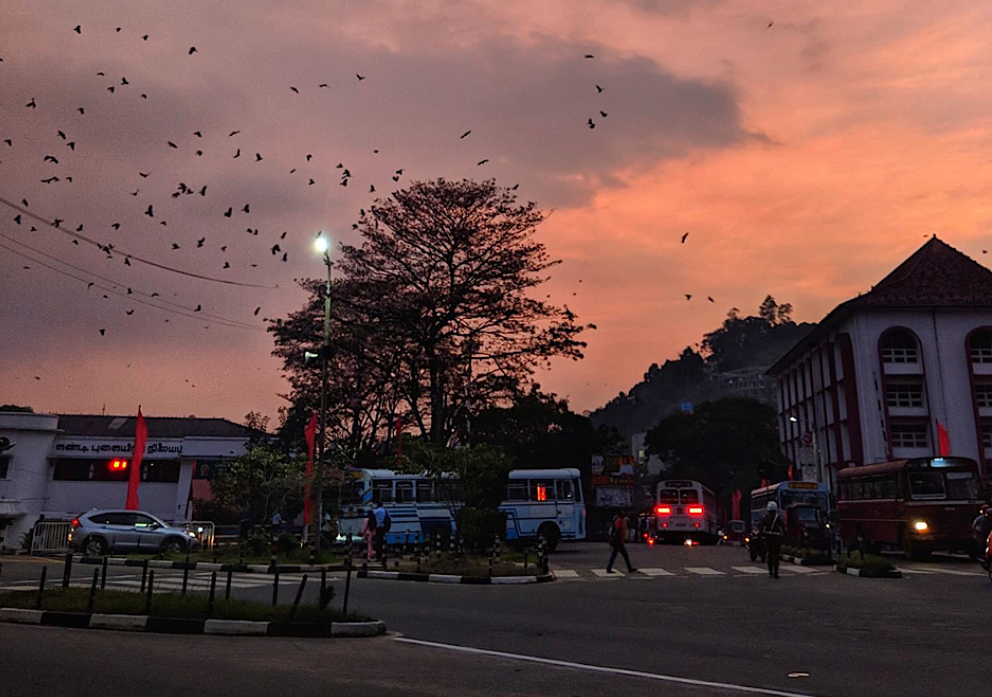
Colombo came alive in the evenings, with its lively atmosphere and a range of activities to enjoy. Malls like One Galle Face and Colombo City Central Mall provided excellent options for shopping and entertainment. Personally, I favored the former for its pleasant ambiance and the presence of the first PVR cinema in the country, offering a mix of national and international film screenings. Sunsets were best enjoyed at the beach just in front of the mall. The Port City, a recent addition to Colombo’s landscape, offered a unique experience. It was free to enter and provided an excellent backdrop for photography with its bridge and ample seating areas. Visitors could even fly kites along the beach and savor a variety of street foods such as shakes, ice tea, Maggi, and more. When it came to cuisine, Sri Lanka offered a tantalizing array of flavors. The staple diet comprised a variety of rice and curry dishes, with Kottu being a popular and satisfying option. Seafood, especially prawns near the Galle Face Beach, was a culinary delight. Fried rice and noodles were readily available in major cities and restaurants, providing options for those seeking international flavors. One word of caution for those not fond of spicy food: Sri Lankan cuisine tends to be quite spicy. If you prefer milder flavors, it’s advisable to request your waiter to make the dishes less spicy. Breakfast was a delightful affair with options like egg rotty, fish patties, cutlets, samosas, rolls, cakes, and cream buns. These savory and sweet treats provided a delightful start to the day, complemented by a cup of Ceylon tea. String hoppers, a unique Sri Lankan dish made of rice flour, were a culinary revelation. Served with coconut sambar, they offered a burst of flavors and textures that were a true delight for the taste buds. As I savored the diverse flavors of Sri Lanka, I couldn’t help but be impressed by the country’s rich culinary traditions and the warmth of its people. Sri Lanka’s markets and eateries became not just places to indulge in delicious food but also windows into the heart of the nation’s culture.
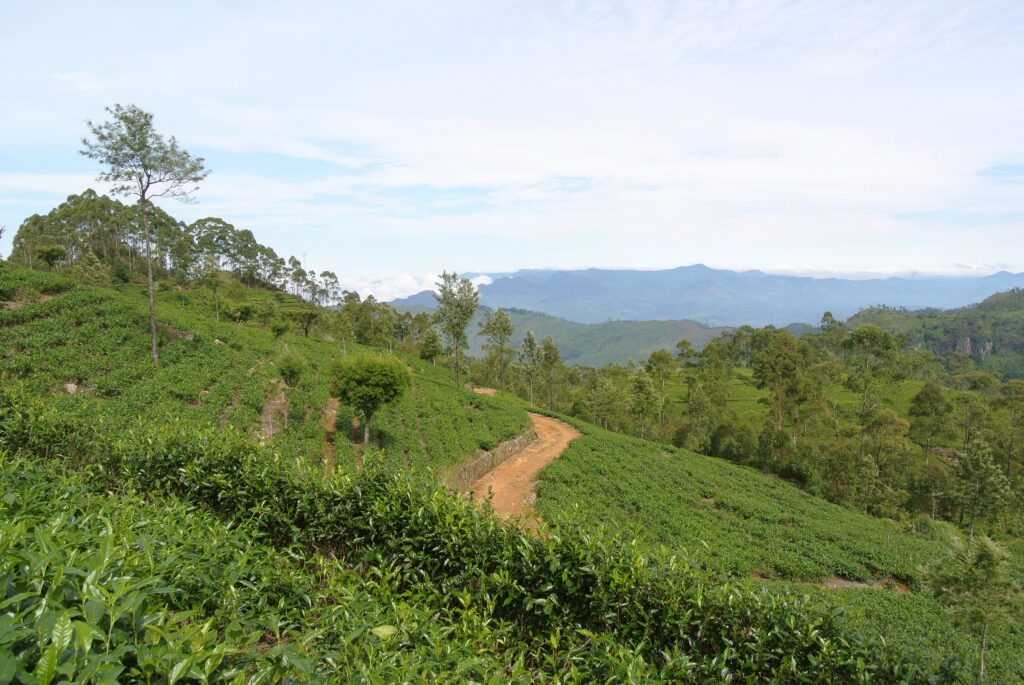
My curiosity about Sri Lanka’s rich tea heritage led me to the Damro Labookellie Tea Centre and Tea Garden, located close to Nuwara Eliya. This establishment boasted over 5,000 hectares of lush tea plantations spread across all major tea-growing regions in Sri Lanka. It stood as one of the oldest tea centers in the country and offered an insightful free tea tour guided by experienced staff and tea workers. The tour took me through the entire tea-making process, from the harvest to the cup, providing a comprehensive understanding of how tea was processed. I discovered the nuances of tea production, with different types and grades emerging from the same plant. From robust black teas like OP, OP1, BOP1, and CTC to delicate white and green teas, the diversity of flavors and aromas was astounding. During the tour, I also had the pleasure of tasting the tea, which was unrefined and pure bliss in its leaf or powdered form. The opportunity to purchase tea leaves or powder as souvenirs was too enticing to resist. The roots of Ceylon Tea are deeply fascinating and trace back to James Taylor, a Scotsman who introduced tea cultivation in Kandy, Sri Lanka, in 1867. He imported tea seedlings from Assam, which proved to be a pivotal moment in Sri Lanka’s agricultural history. The shift from coffee to tea gained momentum due to the devastating coffee leaf disease in the 1870s. Sri Lanka boasts three distinct tea-growing regions: Low grown, Mid grown, and High grown, each elevation contributing distinct flavors and aromas to the world of tea. Renowned regional teas such as Nuwara Eliya, Dimbula, Uva, and more are celebrated for their unique agro-climatic signatures. Ceylon Tea, once a modest venture, has now become an industry giant. The Colombo Tea Auction, which began on a small scale, has burgeoned into the world’s largest tea auction in terms of lots sold.
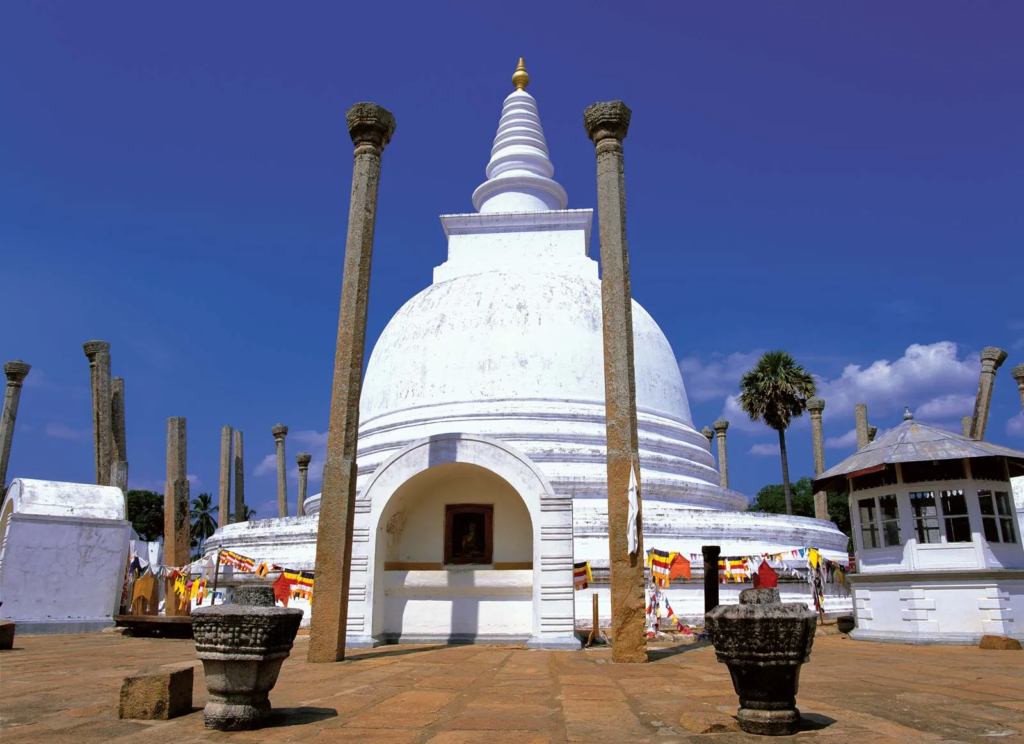
Ancient cities like Anuradhapura, Sigiriya, and Polonnaruwa were captivating windows into Sri Lanka’s storied past. These UNESCO World Heritage Sites preserved the remnants of a bygone era and provided insights into the island’s history. Polonnaruwa, in particular, was a treasure trove of archaeological wonders. Sigiriya, the ancient rock fortress, was a highlight of my travels. Climbing to its summit was an adventure in itself, and the reward was a breathtaking view of the surrounding landscape. While the entrance fees could be steep, it was worth considering the alternative of climbing Pidurangala Rock, which offered a similar experience at a fraction of the cost. Though I didn’t have the opportunity to embark on a safari at Yala National Park or Udawalawe National Park, I heard glowing recommendations about the chance to witness wild elephants, leopards, jackals, bears, spotted deer, and peacocks in their natural habitat. While safaris were considered a splurge, Dehiwala Zoological Garden provided a more affordable option to encounter these magnificent creatures. The Nallur Kandaswamy Kovil Temple Festival in Jaffna was another cultural event I missed but heard rave reviews about. This beautiful religious festival attracted Tamilians from across the world and showcased the rich heritage of the Tamil culture. It was an event that added to the tapestry of Sri Lanka’s cultural diversity. August and September marked the peak season for two of the country’s most important festivals – the Esala Perehera and the Nallur Kandaswamy Kovil Temple Festival. These celebrations were vibrant displays of spirituality, tradition, and unity.
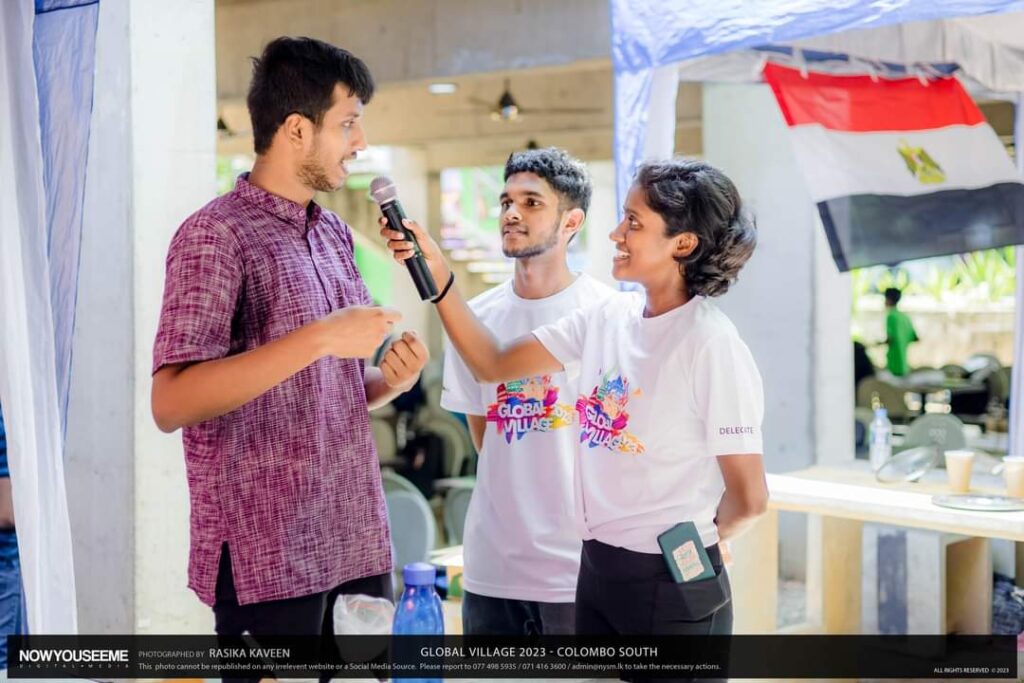
My journey in Sri Lanka extended beyond exploration and adventure. As part of the Global Volunteer Exchange Program with AIESEC, I actively contributed to various initiatives during my stay. One of my roles involved curating the Week Without Wall Program with Borderlands, where I organized team-building activities and outbound experiences for school students. These activities aimed to expose them to nature-based learning and real-life lessons while fostering leadership skills. Training students and myself to become leaders in a wildlife setting was a profound experience. It reinforced the value of experiential learning and highlighted the importance of outdoor education. Additionally, I played a role in planning strategies to promote tourism through destination marketing, recognizing that Sri Lanka’s pristine landscapes and rich culture deserved greater international attention. On a personal level, I took up an initiative to support Sri Lankan Batik Artists based in the Badulla district. This women’s foundation aimed to market, promote, and sell their art online. It was a rewarding endeavor, as I witnessed the passion and talent of these artists, whose work deserved recognition on a global scale. During my stay, I engaged in dialogue exchanges with the Ceylon Chamber of Commerce, exploring possibilities for collaboration between Indian startups and SMEs with Sri Lankan businesses. These conversations aimed to foster business partnerships and resource exchange, ultimately contributing to economic growth and prosperity. One of the most memorable experiences was the Global Village at the University of Moratuwa, where exchange participants from different nations, including Vietnam, Turkey, Egypt, Belgium, Hong Kong, Switzerland, and Pakistan, had set up stalls to showcase their respective cultures, food, and traditions. This cultural exchange was a celebration of diversity, with participants dancing, sharing their art forms on stage, and bonding over games and shared experiences. It was a testament to the power of cross-cultural interaction and friendship.
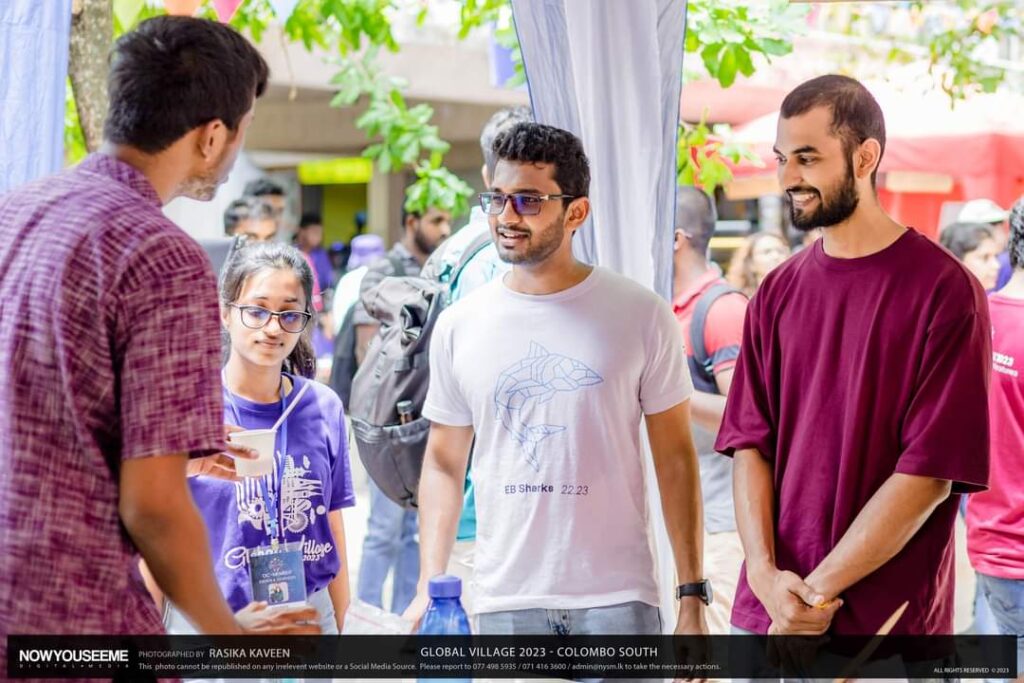
Throughout my journey, I forged connections with people from various exchange participant nations and built meaningful relationships with local Sri Lankans, including students from the University of Colombo and other places I had visited. These connections enriched my experience, providing insights into local life, culture, and traditions. One such connection led to a heartwarming invitation to a local Sri Lankan friend’s home for lunch. The meal was a culinary feast, featuring authentic Sri Lankan dishes that showcased the country’s flavors and hospitality. It was a reminder of the warmth and generosity of the people I had encountered throughout my journey. As my journey in Sri Lanka continued, I couldn’t help but notice some peculiar aspects of the country that added unique layers to my travel experience. One distinctive feature that caught my attention was the prevalence of lottery shops. They seemed to be everywhere – lining the streets, adorning squares, and attracting large crowds of people eager to purchase lottery tickets. What struck me was the official sponsorship of these shops by the National Lottery Board and Government Lottery Boards, with the lottery serving as a significant revenue generator for the government. It was an intriguing intersection of public entertainment and government funding.
Another quirk in Sri Lanka’s tourism landscape was the existence of establishments that discriminated against Sri Lankans themselves. Some hotels and restaurants had a policy of not allowing Sri Lankan patrons, a practice that left me surprised. This policy had historical roots, as in the 1970s and 80s, the government actively promoted a hippie tourism culture and introduced “beach boys” who facilitated various services, including sexual favors and drug requirements for tourists. Sri Lanka’s perception of India also stood out. When I mentioned that I was from India, locals often assumed I was Tamil. The country’s view of India seemed to revolve around the Tamil identity, often overlooking the diversity of India’s 28 states and numerous ethnicities. It was a reminder of how regional stereotypes can influence perceptions. One of the quirkiest cultural differences I encountered was the head-shaking gesture. While in most cultures, nodding the head signifies consent, Sri Lankans shake their heads from side to side to indicate agreement. This reversal in gesture often left foreign visitors like me momentarily perplexed but provided a fascinating insight into the nuances of non-verbal communication.

Although volleyball is the national sport of Sri Lanka, cricket reigns supreme in the hearts of its people. I was surprised to find cricket’s overwhelming fanbase, even though I didn’t come across any volleyball courts or enthusiasts during my travels. It highlighted how cricket had become a unifying passion, much like it is in India. A culinary curiosity I observed was the consumption of raw cinnamon. Sri Lanka is renowned for its cinnamon, a vital ingredient in its cuisine. It is believed to have originated in the country and was first discovered by the Egyptians in 2000 BC. Even today, Sri Lanka remains a leading exporter of cinnamon worldwide. Witnessing locals enjoying raw cinnamon was a testament to the deep connection between the spice and their culinary traditions. Another surprising aspect of daily life was the drinking of tap water. Even in cafes and hotels, tap water was commonly served for drinking purposes, with locals considering it safe to consume. This practice was a testament to the country’s confidence in the quality of its tap water, which was a departure from the norm in many other places. Sri Lankans had unique food preferences as well. They favored cassava over potatoes and relished curd with trickle jaggery made from Kithul. Raw chili paste was a common accompaniment to rice, and it was not unusual to have three meals a day centered around rice and curry. These culinary choices reflected the country’s rich gastronomic heritage.
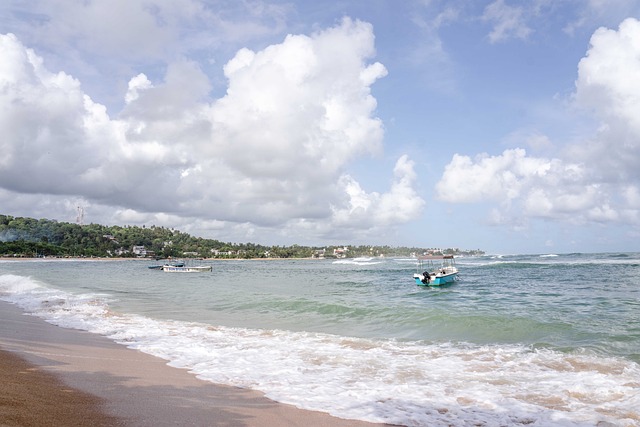
Finally, the diverse plug points used throughout the country added to the quirks of daily life in Sri Lanka. Buildings sometimes featured the three-pronged UK socket, the two-pronged European one, or the rounded, three-pronged socket used in India and Nepal. This variation meant that travelers needed to be adaptable and carry suitable adapters to ensure their devices could be charged or used in different locations. These peculiarities, both cultural and practical, added depth to my experience in Sri Lanka. They were a reminder that every destination has its own unique tapestry of customs and idiosyncrasies that make travel a continually fascinating adventure. As I reflect on my six weeks in Sri Lanka, I am overwhelmed by a sense of gratitude for the experiences, friendships, and memories I have gathered. Sri Lanka has proven to be a land of unparalleled beauty, rich culture, and warm hospitality. It has challenged my preconceptions, broadened my horizons, and left an enduring impression on my heart. With cherished memories and a deep appreciation for this teardrop isle, I sign off from a remarkable journey of discovery. Sri Lanka, you have forever changed me.

